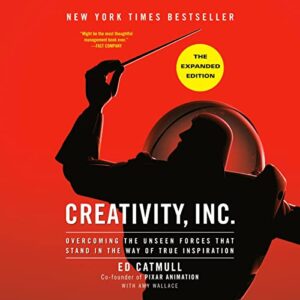Most leaders believe that workplace culture is important to the performance of an organization. The recipe for culture came together in the 90’s and was accompanied by a huge growth in consulting practices for change management, organizational performance, and human capital. If you are a billion-dollar company, you can still access these consulting services.
However, the game industry is mostly small to medium-sized companies. Household names in the game industry can have 500 or fewer employees. Global hit games are being produced by teams of 30 or less. When it comes to the formalization of a high-performing culture, many game companies appear to forego the maximization of culture as a core dynamic of success.
Creating a high-performing workplace culture is one of the most strategic investments any organization can make. Decades of research in organizational psychology, management, and human resources reveal that specific cultural elements drive sustained performance, employee satisfaction, and organizational resilience.
Therefore, we set out to do an authoritative survey so readers can get an overview and access the seminal sources upon which today’s best cultures are built. What follows are the foundational practices essential for cultivating such cultures.
1. Clear Vision and Purpose
A compelling vision and purpose unify employees, providing them with direction and a sense of belonging. According to Collins and Porras in their foundational work, “Building Your Company’s Vision” (1996), a clear vision anchors the organization’s identity, enabling employees to understand how their roles align with larger objectives. Similarly, Groysberg et al. emphasize in “The Leader’s Guide to Corporate Culture” (2018) that high-performing companies prioritize aligning employees with a shared purpose, which drives motivation and engagement.
2. Strong Leadership and Accountability
Effective leadership is critical to setting the tone of a high-performance culture. Avolio and Gardner, in “Authentic Leadership Development” (2005), argue that authentic, accountable leadership directly influences employee performance and satisfaction. Likewise, Bennis and Nanus’s seminal work, Leaders: The Strategies for Taking Charge (1985), underscores that strong leaders who exhibit accountability inspire similar values across the organization, creating a stable environment for high performance.
3. Open Communication and Transparency
Open communication fosters a trusting environment essential for collaboration and innovation. Edmondson’s study, “Psychological Safety and Learning Behavior in Work Teams” (1999), established that transparent communication creates psychological safety, allowing employees to voice ideas and concerns without fear of negative consequences. Additionally, Dutton, Roberts, and Bednar’s work on “Pathways for Positive Identity Construction at Work” (2010) highlights how open dialogue enhances trust and social resources within teams, leading to a more cohesive and collaborative workplace.
4. Employee Empowerment and Autonomy
Empowering employees with autonomy leads to higher motivation and engagement. Deci and Ryan’s influential work on self-determination theory, “The ‘What’ and ‘Why’ of Goal Pursuits” (2000), demonstrates that autonomy increases intrinsic motivation, leading to improved performance. The Job Characteristics Model, proposed by Hackman and Oldham in “Motivation through the Design of Work” (1976), also highlights that autonomy is a core job characteristic that fosters a motivating and high-performing environment.
5. Commitment to Learning and Development
High-performance cultures prioritize learning and development, which drive growth and adaptability. Senge’s The Fifth Discipline: The Art and Practice of the Learning Organization (1990) popularized the idea that learning organizations adapt more readily to changing environments. Similarly, Garvin in “Building a Learning Organization” (1993) emphasizes that learning organizations are better equipped to improve performance and handle challenges proactively.
6. Recognition and Reward Systems
Effective recognition systems enhance employee engagement and productivity. Frey and Gallus, in “Honours: A Rational Choice Approach”, argue that recognizing and rewarding employees aligns with intrinsic motivation, strengthening a high-performance culture. Additionally, Ariely et al. in “Man’s Search for Meaning: The Case of Legos” (2008) found that meaningful recognition contributes significantly to motivation and persistence.
7. Focus on Well-being and Work-Life Balance
Supporting employee well-being is essential for sustaining high performance. In their review, Danna and Griffin (Health and Well-Being in the Workplace, 1999) highlight how well-being programs improve productivity by reducing stress and increasing satisfaction. Schaufeli, Bakker, and Salanova in “The Measurement of Work Engagement” (2006) further demonstrate the relationship between well-being, engagement, and productivity.
8. Collaborative and Inclusive Environment
An inclusive culture is key to maximizing employee potential and engagement. Wegge et al. in “Taking a Sickie” (2007) show that inclusive workplaces reduce absenteeism, enhance job satisfaction, and improve overall team performance. Roberson’s work, “Disentangling the Meanings of Diversity and Inclusion in Organizations” (2006), further illustrates that inclusive environments foster better collaboration and performance.
9. Agility and Adaptability
High-performing organizations are agile, adapting swiftly to changes. Hamel and Välikangas’s study, “The Quest for Resilience” (2003), discusses how agility and resilience allow organizations to remain competitive under changing conditions. Additionally, Brown and Eisenhardt’s “The Art of Continuous Change” (1997) connects organizational agility to sustained high performance, as adaptability becomes critical in volatile markets.
10. Values-Driven Decision Making
Operating based on core values fosters alignment and high-quality decision-making. Schwartz’s foundational research on values, “Universals in the Content and Structure of Values” (1992), highlights that shared values create a unified culture and help align employees with organizational goals. Similarly, Denison and Mishra in “Toward a Theory of Organizational Culture and Effectiveness” (1995) establish that values-driven cultures positively influence both performance and organizational resilience.
Conclusion – Workplace Culture
The literature makes it clear that high-performing workplace cultures are driven by a combination of clear vision, effective leadership, open communication, empowerment, continuous learning, recognition, well-being support, inclusivity, agility, and shared values. These elements not only motivate employees but also create resilient organizations that are well-equipped to adapt and succeed in changing environments. By integrating these foundational practices, organizations can cultivate a culture that sustains high performance over the long term.
Building a high-performing culture is a unique journey, and that is good news. The construction of the culture is its own creative endeavor. For high performance to occur, the culture needs to reinforce and energize the unique purpose, values, and workforce of the organization. Organizations that invest in these essential elements will be better positioned to thrive in today’s competitive and dynamic landscape.
About QDStaff
If you want to improve GGR you need a recruiting partner with a scientific approach to game studio talent transformation. Good games aren’t luck. They are the result of great teams… and our clients prove it.
More at www.QDStaff.com
Follow QDStaff on LinkedIn for more insights on building award-winning game studios.




